EAU DE L’EAU
Lausanne, Switzerland
January 2024
In collaboration with: Metaxía Merkaki, Uxía Varela Exposito, and Elvira Martínez
Competition entry for the 2024 Lausanne Jardins Festival
We proposed an installation that celebrates the capture and storage of rainwater on a park lawn that sits above an underground stormwater treatment plant on the shores of Lac Lemán in Lausanne. In our proposal, we used devices of water play ("jeux d'eau") that were activated by people's bodies to move water throughout the garden, weaving in our installation with the existing parcours course that was in the park. The water travelled through pipes to irrigate small plantings of young trees, which would then be replanted in the city of Lausanne as a part of their forestation plan (a response to the temporariness of planting during garden festivals).


Take the time. Take the water. Take care. We imagine a garden in which water is gathered before draining. Slowed-down, it creates a new space for life and multispecies encounters. Evolving during the festival, this garden becomes a place for exploration and experimentation, narrating a tale of ecological co-habitations in contemporary urban environments, in a playful, yet, time- and care- demanding manner.
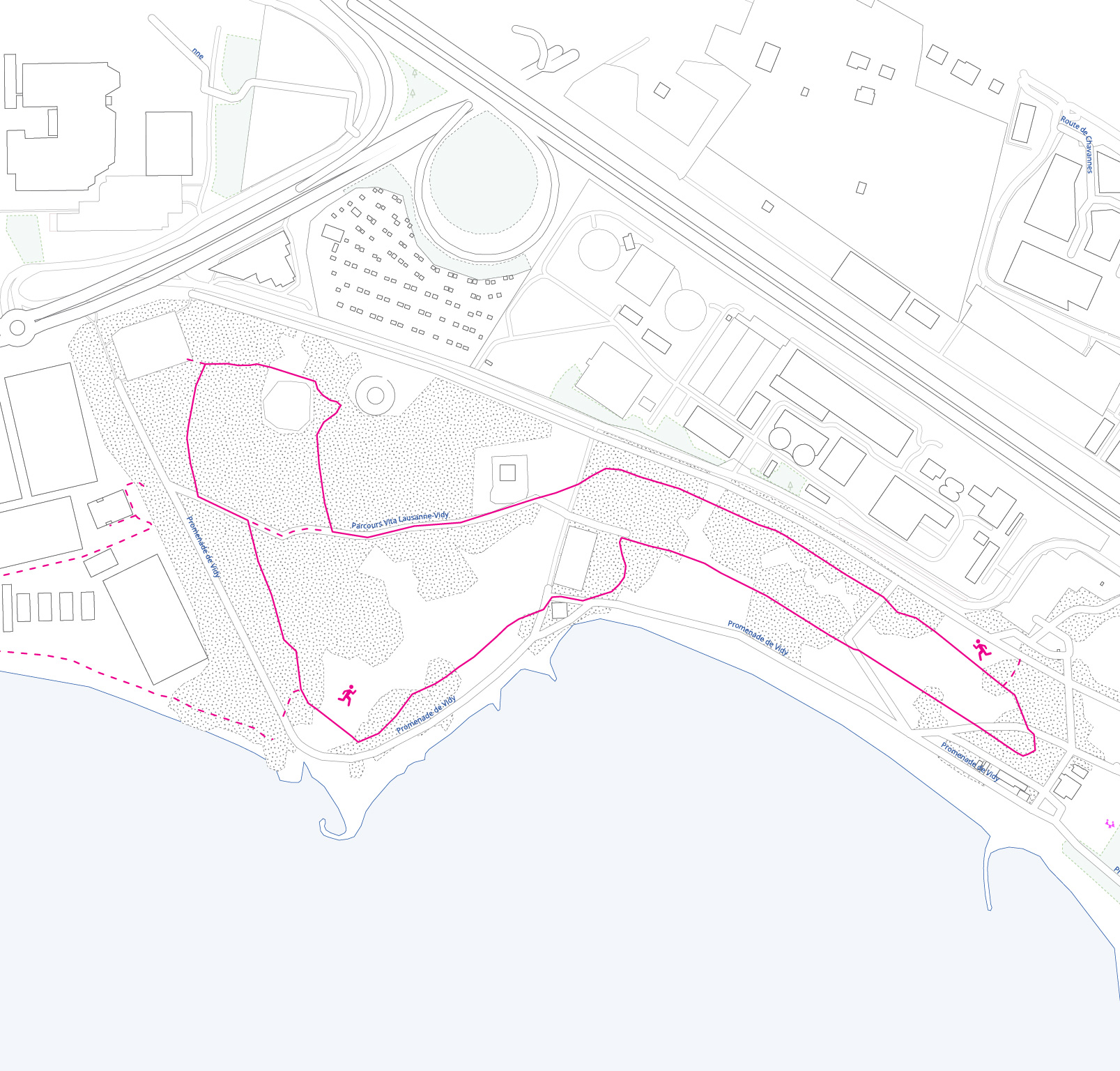
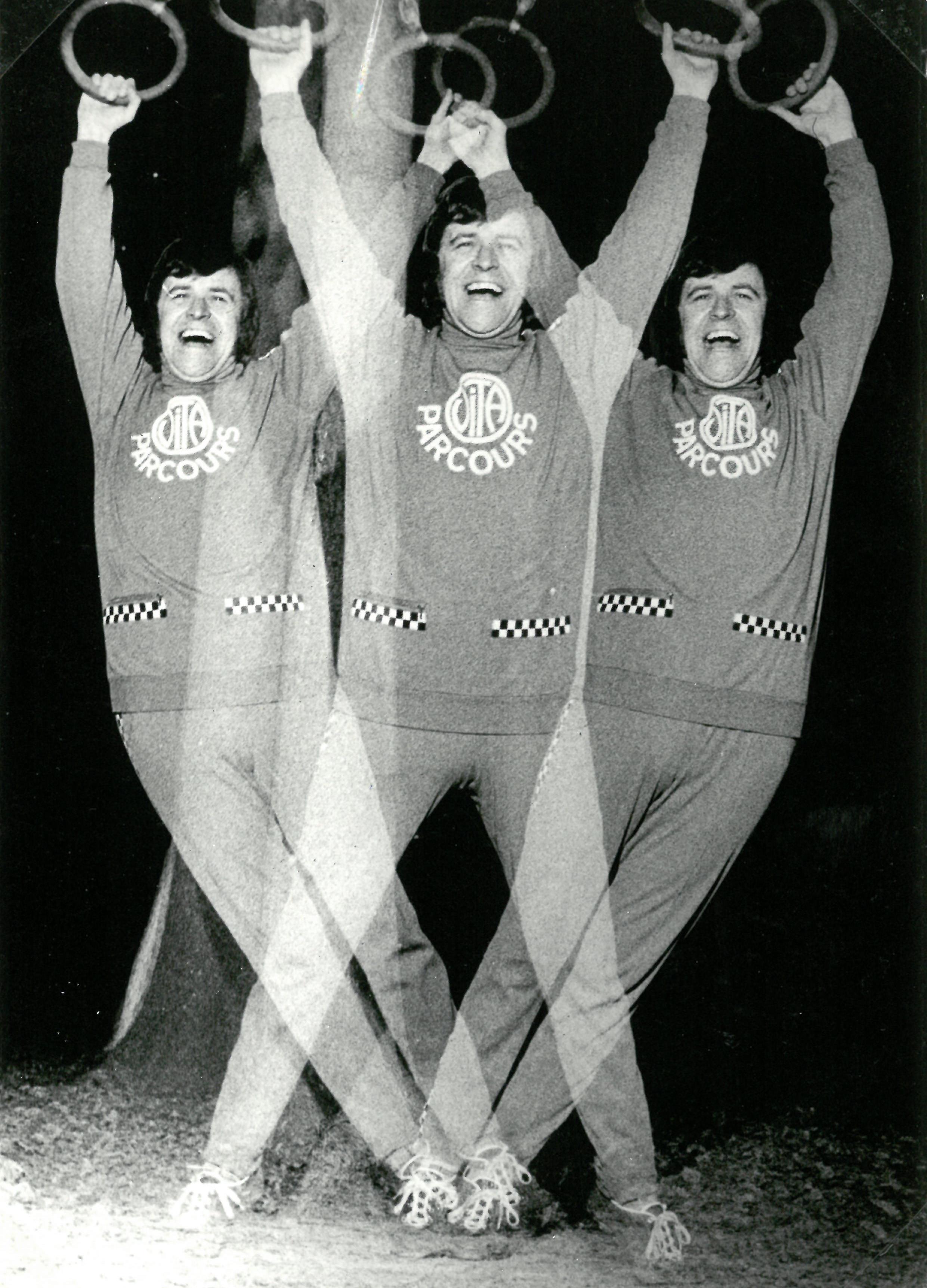

Bodily Encounters
Parc Louis-Bourget. People are strolling, jogging, dancing, doing parcours. A woman is collecting driftwood, “which the lake brings seasonally from the mountains,” she explains. Nearby, a sand-pile is accumulating as part of the broader territorial water flow. Constant movements of different bodies intersect–water bodies, human bodies, material and ecological flows. We see the lake as an ecological space with the immense potential of bringing together territorial scales and temporalities, able to generate unexpected urban encounters.


Why drain so quickly?
Water Treatment plant. Site A2. Under our feet, a hidden infrastructure designed to process and drain urban water. While the body of the lake visually dominates Lausanne, it is the water running invisibly through the urban fabric that shapes the possibilities for life in the city: moving in the soil, in plants, in our bodies, transfigured in the air as humidity. Yet, the urban path of a water-drop is typically designed to be as short as possible. Water is only briefly present on the city surface before it disappears into the underground network of pipes. Along this short route are a number of missed opportunities: for irrigation, for infiltration, for cooling, for energy, for play. What kinds of potential could the water that falls on the city of Lausanne hold if this path were purposefully lengthened? If we could lean into a slow, circuitous route for a single drop of water?
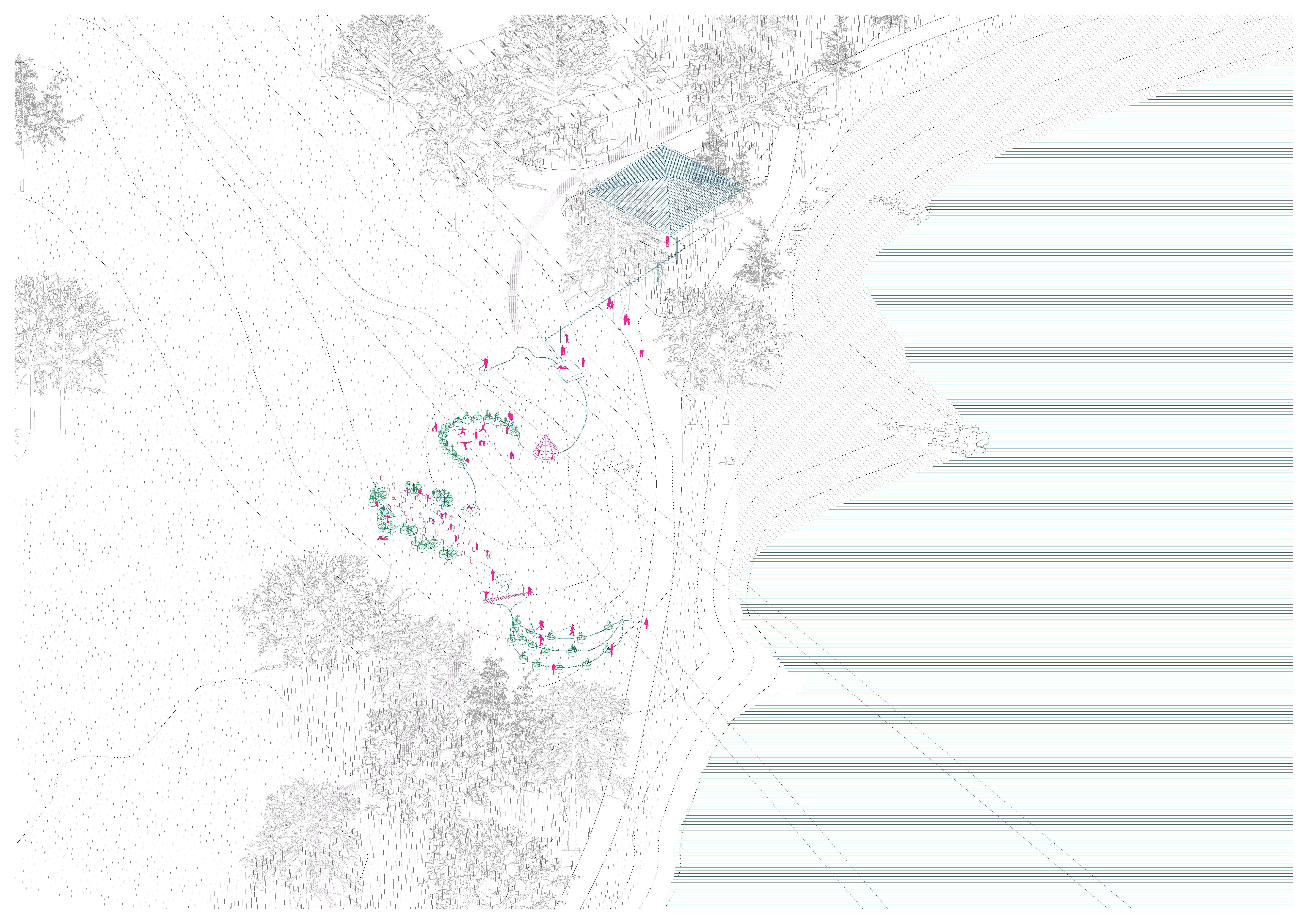
Celebration
As the climate of Lausanne (and Switzerland) becomes hotter and dryer, this invisible, quickly drained water becomes both more precious and more potent. Seeing an immense potential in the living systems and infrastructures that mediate the hydric balance of a site, we want to interfere with the existing path of the water, to slow it down and make it visible, celebrating the invisible water that animates the city.

Building a Garden / Growing a garden
We propose to create a new hybrid moment in the landscape, where the water cycle, urban life and ecology meet, inviting exploration and experimentation. Capturing water from the rain and the lake, we make visible its flow, engaging with the existing parcours course to irrigate a chain of temporary nurseries, each containing trees that will be planted throughout the city after the festival. These performative encounters draw attention to the intimate connections between water infrastructure, the health of urban vegetation and human comfort and wellbeing.

Time in a garden
Lausanne Jardins is a celebration and its spirit is ephemeral. For this, our gestures are light and all elements are movable. We design our garden to perform as a “water carnival”, with unexpected experiences and instantaneous moments. Events, dance, performances, and collaborations with choreographers will animate the installation. And yet, we highlight that a garden also grows over a longer temporality. With this project, we imagine that we plant a “seed” that will last longer than the festival. A memory of an experience of “living together” that will stay with the inhabitants, along with the 50 trees that will sprout and spread in the city of Lausanne.
01 Water Cycle
Water is a catalyst for life. In this installation, we make the most of a minimum amount of water that transitions between different states: we collect rainwater and water drawn from the lake; we circulate it through soil, air and plants; on the way, we engage the public in watering and care-taking activities through a chain of playful pumps. As we prolong its path, the water generates a multitude of micro-ecologies and triggers public life before returning to the lake.
02 Jeux d’eaux
A parcours path crosses our site. It connects the forest, the lakefront and the wetlands through a continuous movement, inviting its users to engage their bodies in uncommon rhythmic motions. Our garden engages with this site-specific activity and on-site community, amplifying the site’s existing dynamism. It diverts the parcours course and becomes part of it, hosting a series of water games linked to the different nurseries. We create three simple pumps, inspired by the existing parcours elements, which circulate the water through the installation irrigating the temporary nurseries.
03 Temporary nurseries
The temporary nurseries are designed as movable, overground ecologies, supporting young trees that can then be planted elsewhere in the city when the festival ends. The 50 saplings in the project represent 1/10th of the quantity of trees that SPADOM plants every year, drawing attention to the ongoing renewal of the urban forest and fostering a sense of care for urban vegetation. Along with the small trees, the nurseries will feature a dynamic mixture of flowering and aromatic herbaceous plants which inspire curiosity and engage visitors.
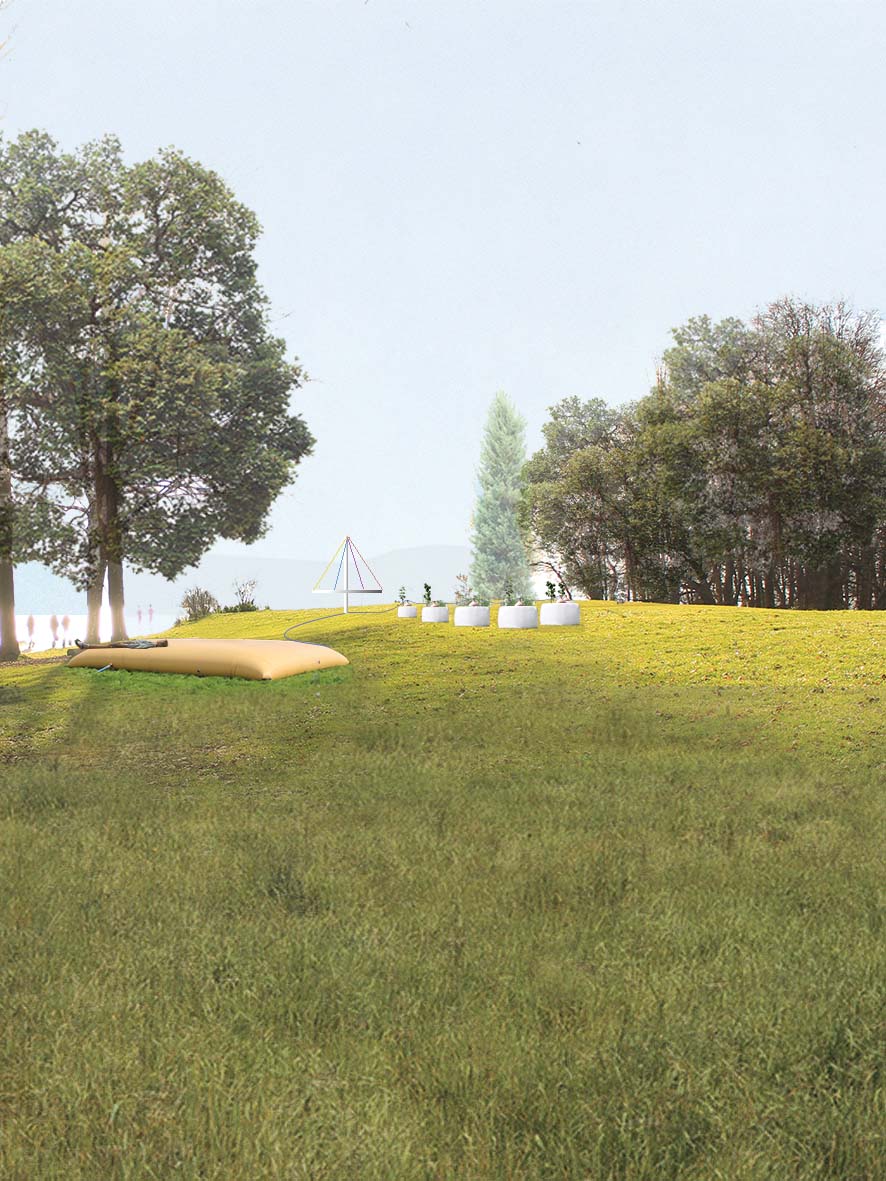
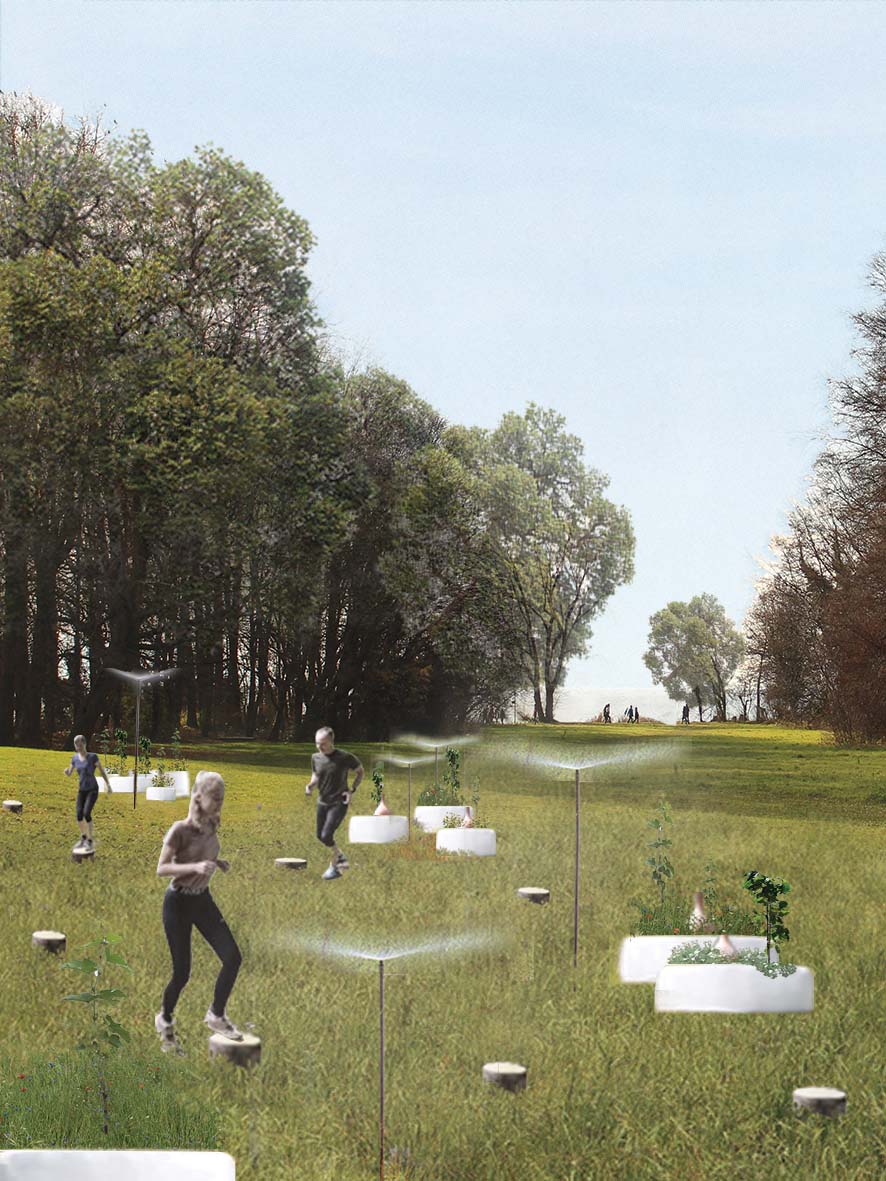
To materialize this multilayered project, we brought together a multidisciplinary team, combining expertise in landscape architecture, architecture, hydraulic engineering and gardening, as the only way of meaningfully engaging with the complex socio-ecological challenges of contemporary urban landscapes.
OLT Team: Cara Turett, Luke Harris, Bonnie-Kate Walker